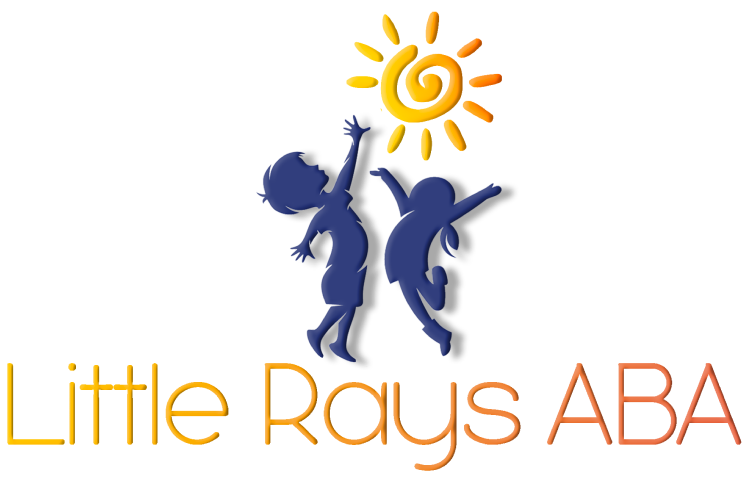Understanding Autism Spectrum Disorder
Autism spectrum disorder (ASD) is a complex developmental disability that affects how a person communicates, behaves, and interacts with others. Here, we will explore the characteristics and prevalence of ASD to provide a better understanding of this condition.
Characteristics of ASD
Individuals with autism spectrum disorder exhibit a range of behaviors and challenges, primarily in social communication and repetitive behaviors. According to the CDC, common traits of ASD include:
- Difficulty with Social Communication: People with ASD often struggle with social interactions. This can manifest as trouble understanding non-verbal cues, maintaining conversations, or forming and sustaining peer relationships.
- Repetitive Behaviors: Individuals with ASD might engage in repetitive movements, such as hand-flapping, rocking, or repeating certain phrases.
- Restricted Interests: They may have intense, focused interests on specific topics or activities.
- Sensory Sensitivities: Many people with ASD exhibit heightened sensitivities to sensory input, such as lights, sounds, or textures.
Prevalence of ASD
Autism spectrum disorder affects a notable portion of the population. According to Medical News Today:
- Current Rates: ASD affects approximately 1 in 59 children in the United States.
- Age of Onset: The condition typically appears before a child reaches the age of 3 years old.
- Gender Disparity: ASD is five times more likely to develop in males than females.
Moreover, co-occurrence with other conditions is common. The CDC estimates that 14% of children with ADHD in the U.S. also have ASD, with other research putting this number between 15-25%. A 2010 study featured in Medical News Today revealed that 83% of autistic children had at least one other developmental disorder, while 10% had at least one psychiatric disorder.
| Condition | Prevalence (%) |
|---|---|
| ADHD and ASD | 14 - 25 |
| Developmental Disorders among ASD individuals | 83 |
| Psychiatric Disorders among ASD individuals | 10 |
Understanding the prevalence and characteristics of ASD is vital in distinguishing it from other conditions like ADHD. For further information on similarities and differences between the two, read our article on autism vs ADHD symptoms and ADHD and autism spectrum disorder.
Unraveling Attention Deficit Hyperactivity Disorder (ADHD)
Attention Deficit Hyperactivity Disorder (ADHD) is a neurodevelopmental condition that affects both children and adults. Understanding its symptoms and diagnosis is crucial for distinguishing it from autism and adhd differences.
Symptoms of ADHD
ADHD manifests in a variety of symptoms, which can be categorized into three presentations: predominantly inattentive, predominantly hyperactive-impulsive, and combined presentation (CDC).
| ADHD Presentation | Key Symptoms |
|---|---|
| Inattentive | - Difficulty sustaining attention |
| - Makes careless mistakes | |
| - Often seems not to listen | |
| - Fails to follow through on tasks | |
| - Easily distracted | |
| Hyperactive-Impulsive | - Fidgeting or squirming |
| - Runs or climbs in inappropriate situations | |
| - Talks excessively | |
| - Interrupts others | |
| - Difficulty waiting their turn | |
| Combined | - Exhibits symptoms of both inattentiveness and hyperactivity-impulsivity |
Children with ADHD do not outgrow their symptoms; these symptoms often continue into adulthood and can cause significant difficulties in various areas of life. ADHD's symptoms are often detected more frequently in boys than girls. Girls are more likely to exhibit symptoms of inattentiveness, such as difficulties with concentration and focus, which can sometimes lead to underdiagnosis.
ADHD Diagnosis
The diagnosis of ADHD involves a comprehensive evaluation by a healthcare professional, taking into account behavior patterns, medical history, and symptom severity.
| Population | Percentage Affected |
|---|---|
| Children | 8.4% |
| Adults | 2.5% |
The diagnostic process includes:
- Clinical Interviews: Gathering detailed information about the individual's behavior, lifestyle, and medical background.
- Behavioral Rating Scales: Using standardized tools to compare the individual's behavior against typical patterns.
- Observation: Direct observation of behavior in various settings such as school, home, and social interactions.
ADHD is often diagnosed using criteria from the Diagnostic and Statistical Manual of Mental Disorders (DSM-5), which outlines specific symptom thresholds and their impact on functional abilities.
Understanding the symptoms and diagnosis of ADHD is pivotal in differentiating it from autism. To further explore the similarities and contrasting features of these conditions, visit our article on autism-ADHD similarities.
Differentiating Autism and ADHD
Navigating the distinctions between Autism Spectrum Disorder (ASD) and Attention Deficit Hyperactivity Disorder (ADHD) can be challenging, yet it is essential for understanding these conditions. While both share some similarities, they each present unique characteristics.
Overlapping Traits
ASD and ADHD share several overlapping traits, often making it difficult to distinguish between the two. Both conditions exhibit challenges in regulating attention, activity levels, and impulsivity. These shared traits can lead to misconceptions and misdiagnosis.
| Trait | Autism Spectrum Disorder (ASD) | Attention Deficit Hyperactivity Disorder (ADHD) |
|---|---|---|
| Attention Regulation | Struggles with focus, often fixating on specific interests | Difficulty sustaining attention across tasks |
| Activity Levels | Prefer structured, repetitive activities | May show hyperactive behavior and crave novelty |
| Impulsivity | Less common, tends to stick to routine | Frequently acts without thinking, highly impulsive |
Both conditions significantly impact individuals' daily lives, requiring comprehensive understanding and appropriate interventions.
Contrasting Features
Despite the similarities, several contrasting features differentiate autism from ADHD. These differences are crucial for accurate diagnosis and tailored interventions.
1. Routine vs. Novelty:
- Individuals with autism often seek routine and predictability, leading to distress when routines are disrupted.
- People with ADHD typically exhibit a craving for new experiences and may become easily bored with repetitive tasks.
2. Emotional Expression:
- Those with ASD might display emotions that don't match the situation, such as repeated giggling or extreme distress.
- Individuals with ADHD may have challenges with emotional regulation, but their emotions generally correspond to the context of the situation.
3. Social Interaction:
- People with autism may struggle with interpreting others' emotions and social cues, impacting their social interactions.
- ADHD individuals might also face social challenges, but these are often related to their impulivity and inattentiveness rather than a fundamental difficulty in understanding social cues.
4. Behavior Control:
- Autism spectrum disorder often involves repetitive behaviors and resistance to change.
- ADHD typically involves a lack of inhibitory control, leading to impulsive actions that can seem erratic.
Understanding these distinctions enables better identification and support for individuals with either or both conditions. For more insights into how to differentiate and manage these conditions, visit our related article on ADHD or autism spectrum.
Co-Occurrence of Autism and ADHD
Understanding the overlap between Autism Spectrum Disorder (ASD) and Attention Deficit Hyperactivity Disorder (ADHD) can provide insights into how these conditions interact and co-exist. This section explores the comorbidity rates and shared genetic influences of autism and ADHD.
Comorbidity Rates
The co-occurrence of ASD and ADHD is more common than many realize. The Centers for Disease Control and Prevention (CDC) estimates that 14% of children with ADHD in the U.S. also have autism spectrum disorder. Other research places this figure between 15-25%. Studies suggest that approximately 21% of children with ADHD also exhibit autistic traits, and around 28% of autistic children meet the criteria for ADHD.
| Condition | Prevalence (%) |
|---|---|
| Children with ADHD and ASD | 14 - 25 |
| Children with ADHD exhibiting autistic traits | 21 |
| Autistic children meeting criteria for ADHD | 28 |
Shared Genetic Influences
Research indicates that there are shared genetic influences and a high heritability rate between ASD and ADHD. Both conditions often involve difficulties with regulating attention, activity levels, and impulsivity. However, they manifest differently in individuals.
Shared traits in ASD and ADHD also include challenges in social interactions, heightened focus on specific interests, and difficulties in adapting to new situations. These overlapping characteristics can sometimes lead to a complex diagnostic process.
Impact on Daily Life
Understanding the daily challenges faced by individuals with Autism Spectrum Disorder (ASD) and Attention Deficit Hyperactivity Disorder (ADHD) can provide insights into their unique needs and experiences. This section covers the social, emotional, academic, and professional difficulties commonly encountered.
Social and Emotional Challenges
People with ASD often face significant hurdles in social understanding and communication. These struggles can lead to difficulties in forming friendships, maintaining relationships, and interpreting social cues. Commonly, individuals with ASD may exhibit repetitive behaviors or routines that can be misunderstood by peers. Additionally, unusual emotional responses, such as repeated giggling without an apparent reason or extreme distress even when comforted, are typical behaviors in ASD.
In contrast, individuals with ADHD may struggle with impulsivity and hyperactivity, which can complicate social interactions. These traits may result in difficulties waiting for their turn during conversations, interrupting others, or acting without considering the consequences. Consequently, these behaviors can lead to challenges in building and sustaining social relationships. Similarly, individuals with ADHD frequently experience emotional regulation issues, such as sudden mood swings and difficulty managing stress, further impacting their social lives.
Academic and Professional Difficulties
Both ASD and ADHD can significantly affect academic and professional performance. Students with ASD may find it challenging to adjust to changes in routine, follow classroom norms, or engage in group work. These difficulties can hinder academic success and lead to feelings of isolation and frustration.
On the other hand, individuals with ADHD can face problems with attention, leading to difficulties in focusing on tasks, meeting deadlines, and organizing work. These challenges often result in lower academic achievements and difficulties maintaining consistent performance in a professional setting. ADHD-related traits, such as impulsivity and hyperactivity, can also contribute to higher risks of accidents and errors in work environments.
Table: Impact on Daily Life for ASD and ADHD
| Impact Area | ASD | ADHD |
|---|---|---|
| Social Understanding | Difficulties in interpreting social cues, forming friendships | Impulsivity, interrupting others, difficulty waiting for turns |
| Emotional Regulation | Unusual emotional responses, repetitive behaviors | Sudden mood swings, difficulty managing stress |
| Academic Challenges | Difficulty adjusting to routine changes, classroom norms | Trouble focusing, meeting deadlines, organizing work |
| Professional Difficulties | Hindered performance due to social challenges | Higher risks of accidents, errors, and inconsistent performance |
Support and Interventions
Understanding and differentiating autism and ADHD differences is crucial for providing the right support and interventions. This section outlines the professional diagnosing processes and therapeutic approaches available for individuals with either or both of these conditions.
Professional Diagnosing
Accurate diagnosis is vital in tailoring effective interventions for individuals with autism and ADHD. Various professionals are involved in this diagnostic process, each bringing unique expertise to ensure thorough evaluations. Some of the key professionals include:
- Pediatricians: Often the first point of contact, they can start the screening and refer to specialists.
- Neurologists: Focus on diagnosing neurological aspects that may influence both autism and ADHD.
- Developmental-Behavioral Pediatricians: Specialize in developmental and behavioral issues, offering nuanced insight.
- Nurse Practitioners: Provide initial assessments and ongoing support.
- Child Psychiatrists: Important for evaluating and managing psychiatric aspects and prescribing medications if needed.
- Clinical Child Psychologists: Conduct comprehensive psychological assessments and behavioral evaluations.
| Professional | Role in Diagnosis |
|---|---|
| Pediatricians | Initial Screening and Referral |
| Neurologists | Neurological Assessment |
| Developmental-Behavioral Pediatricians | Developmental and Behavioral Evaluation |
| Nurse Practitioners | Initial Assessment and Support |
| Child Psychiatrists | Psychiatric Evaluation and Medication Management |
| Clinical Child Psychologists | Psychological Assessments |
These professionals work together to ensure that every component of a child's needs is met, creating a comprehensive care plan.
Therapeutic Approaches
Once a diagnosis is established, a variety of therapeutic approaches can be employed to address the unique needs of individuals with autism and ADHD:
- Speech Therapists: They assist in enhancing communication skills, making it easier for individuals to express themselves and understand others.
- Occupational Therapists: Focused on improving daily living skills, they help individuals develop coping mechanisms and enhance their overall quality of life.
- Educational Therapists: These professionals aid in developing organization and time management skills, mitigating academic challenges, and fostering personal growth through targeted learning strategies.
- Pediatric Neuropsychologists and Neuropsychiatrists: Provide detailed cognitive and behavioral assessments and help in formulating tailored interventions.
| Therapist | Focus Area |
|---|---|
| Speech Therapist | Communication Skills |
| Occupational Therapist | Daily Living Skills and Coping Mechanisms |
| Educational Therapist | Academic and Personal Growth |
| Pediatric Neuropsychologist | Cognitive and behavioral Assessments |
Educational Interventions: Individualized Education Plans (IEP) and special education services are paramount in addressing the unique educational needs of children with autism or ADHD. These plans ensure that students receive tailored educational supports, promoting academic success and personal development.
Conclusion
Ensuring ongoing support is critical for both conditions. Understanding the complexities of autism and ADHD is crucial for providing effective support and interventions. By recognizing the unique traits and challenges of each condition, we can foster a more inclusive and supportive environment for individuals with neurodevelopmental differences.
If you're looking for personalized ABA therapy solutions to help your child thrive, contact Little Rays ABA today to learn more about our compassionate and evidence-based services!
Sources:
- https://www.cdc.gov/autism/signs-symptoms/index.html
- https://www.autismspeaks.org/sensory-issues
- https://www.medicalnewstoday.com/articles/325618
- https://www.nhs.uk/conditions/attention-deficit-hyperactivity-disorder-adhd/symptoms/
- https://www.psychiatry.org/psychiatrists/practice/dsm
- https://www.autistica.org.uk/what-is-autism/adhd-and-autism
- https://www.hhs.texas.gov/services/disability/autism/autism-training-opportunities/autism-spectrum-disorders-training-program-first-responders/module-4-common-behavior-characteristics-individuals-autism-spectrum-disorder-asd
- https://www.onecentralhealth.com.au/autism/10-myths-about-autism/
- https://www.understood.org/en/articles/the-difference-between-adhd-and-autism
Unlock Your Child's Potential with Expert ABA Therapy!
At Little Rays ABA, we provide compassionate, evidence-based ABA therapy to help children with autism thrive. Our personalized approach fosters growth in communication, social skills, and independence.
Get In Touch With Us Today to Get Started With ABA Therapy!
Related Posts
MENU
GET IN TOUCH
7117 San Salvador Dr Boca Raton, FL 33433
3200 Collins Ave Miami Beach, FL 33140





